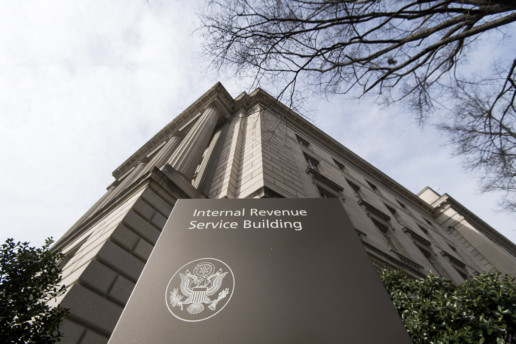5 ways HR can help millennials be smarter than their parents about retirement
Getting younger employees to save for retirement is right up there with getting a finicky child to eat their vegetables. Sure, it's good for them, but it's not always what they want.
Participation rates and average deferral rates in voluntary enrollment plans for workers younger than 35 are well below those of other age groups, indicating that HR teams may need to take extra steps to reach this segment of their employee base, according to data from Vanguard, a leading 401(k) provider.
HR professionals are uniquely positioned to best assist younger workers. The best tack for HR experts to take with millennials in regard to retirement saving is to point out some of the mistakes their parents' generation has made in that area.
Help employees understand the destination
When it comes to saving for retirement, a lot of older workers are clearly lost. Younger workers have an opportunity to do a better job of staying on track.
Vanguard’s data show the average 401(k) participant within 10 years of retirement age (i.e., between ages 55 and 64) has a plan balance of just $69,097.
That may not provide much help over a retirement of 10 or 20 years.
Caution young staff members that one reason older workers are so badly behind in retirement saving is that they haven't checked first to see where they're going.
A MoneyRates retirement plan survey finds that 71% of workers within 20 years of retirement age still have not done a calculation of how well their savings will hold up over their retirement years.
Encourage your workforce to determine what enough savings is. Inform your staff that it only takes a few minutes to use a retirement calculator to see how much to put aside to meet savings goals. That way, your employees will know where their retirement plan is heading.
Educate employees on how to get debt under control
Saving for retirement is undermined when employees are also building up debt at the same time.
Stress that debt costs more than retirement investments are likely to earn, a dollar in debt can more than counteract the benefit of a dollar in savings.
According to the Federal Reserve's Survey of Consumer Finances, the typical household still has $69,000 in debt by the time the head of that household is within 10 years of retirement.
Notice that this figure almost exactly matches the previously-mentioned amount that the average 401(k) participant in that age group has. In other words, debt can effectively wipe out a person's 401(k) savings.
So, your team’s first step toward educating workers about building a more secure retirement should be to do something many in their parents' generation failed to do: get debt under control.
Teach employees how to spread savings to make the burden lighter
Retirement saving is a big job, but younger workers have something very important on their side: time. Emphasize that spreading retirement savings out over 25 to 40 years makes the job much easier.
It gets tougher if young workers do what many of their parents' generation have done--wait and then try to catch up in the last ten years or so until retirement.
The golden rule: Don't leave free money on the table
When employers provide a 401(k) match, all staff should understand there's a direct financial incentive to start saving now. Every time employees put money into their 401(k) plan, the employer kicks in some on their behalf.
If employees don't contribute money into the plan, they don't get this money from the employer. There's no going back in future years and reclaiming that extra money the employer would have put in on the worker’s behalf.
The only way not to miss out on this free money is to contribute each and every year— and to contribute enough to get the maximum employer match available.
Show employees the benefits of saving
A dollar saved today can equal $10 at retirement age.
Saving money is hard work, but HR professionals can show their employees that it gets easier when they let their investments do the work for them.
The investment returns earned become much more powerful when compounded over a long period of time. Compounding means earning a return not just on the original money invested, but also on the returns earned in other years.
Younger workers must recognize that a dollar invested today could be worth much more than a dollar invested toward the end of their career.
There are many people of older generations who would be a lot better off today if they absorbed each of these five lessons when they were younger.
SOURCE: Barrington, R. (14 October 2020) "5 ways HR can help millennials be smarter than their parents about retirement" (Web Blog Post). Retrieved from https://www.employeebenefitadviser.com/opinion/ways-hr-can-help-millennials-be-smarter-than-their-parents-about-retirement
Every dollar counts in today’s zero-interest-rate environment
It’s no secret that interest rates have been at historically low levels for quite some time, but the recent announcement by Federal Reserve Chairman Jerome Powell indicates that rates will stay near zero for the foreseeable future. Chairman Powell stated in his address last month that the Fed would tolerate above-2% inflation instead of attempting to preemptively control inflation by raising interest rates.
With rates likely to remain low, investors, and especially participants in sponsored 401(k) plans in the U.S. retirement system, need every dollar they can save to achieve their goals in retirement. This is particularly true this year, with the COVID-19 pandemic having inflicted significant disruption, uncertainty, and volatility on our nation’s workforce as well as the financial markets.
Even before the pandemic, low interest rates were already hitting Americans enjoying or nearing retirement very hard, because lower rates for annuities and money market accounts require people to save more when trying to convert savings into income. The indexing of Social Security benefits at lower rates also decreases income in retirement.
Stop automatically cashing out terminated participants’ small-account balances!
Since every dollar counts for plan participants in our pandemic-disrupted, zero-interest-rate environment, why are sponsors (who have a duty to adhere to the fiduciary standard) continuing to cash out small, stranded accounts with less than $1,000?
The Employee Benefit Research Institute (EBRI) estimates that a total of $92 billion in hard-earned savings leaks out of the U.S. retirement system every year because 401(k) plan participants prematurely cash out their accounts when they switch jobs. Conducting automatic cash-outs for terminated participants adds to the already sizable leakage of assets from our nation’s retirement system.
As we have noted in previous articles in this space, the primary driver of cash-out leakage is the lack of seamless plan-to-plan asset portability for participants at the point of job-change — and the resultant costly and time-consuming nature of DIY portability.
Boston College’s Center for Retirement Research has reported that, on average, premature cash-outs decrease participants’ total 401(k) assets for retirement by 25%. Cashing out 401(k) savings early is perhaps the worst blunder that a retirement-saver can make. But when sponsors automatically cash out small accounts, they potentially open themselves up to new fiduciary liability down the road.
After all, if a terminated participant has moved to a new house or apartment in the years since working for a former employer, and the new mailing address has not been updated in the files of the plan sponsor’s recordkeeper, then the check for the cashed-out small balance may not reach the accountholder. If that occurs, and the accountholder finds out the assets in their former-employer 401(k) account were lost, the employer could be sued, or the plan could be the focus of a regulatory inquiry.
Auto portability can eliminate the need for automatic cash-outs and rollovers
By adopting the technology solutions which enable auto portability, sponsors can potentially avoid having to conduct automatic cash-outs and automatic rollovers to keep their average account balances and related metrics at healthy levels.
Auto portability — the routine, standardized, and automated movement of a retirement plan participant’s 401(k) savings account from their former employer’s plan to an active account in their current employer’s plan — is powered by “locate” technology and a “match” algorithm. Together, these innovations locate lost and missing participants, and kick-off the process of moving their savings into 401(k) accounts in their current-employer plans.
Auto portability also has the power to make automatic rollovers of small accounts into safe-harbor IRAs a redundant practice. Placing terminated participants’ assets for retirement into safe-harbor IRAs in a low-interest-rate environment isn’t exactly benefiting them, since the only default investment options allowed in safe-harbor IRAs are principal-protected products. The combination of low yields and high fees in too many safe-harbor IRAs can deplete accountholders’ assets over the long term.
The capability to begin the movement and consolidation of 401(k) assets as participants change jobs, as well as reunite lost and missing participants with their 401(k) savings, can help decrease cash-out leakage — and savings depletion — at a time when every dollar in the U.S. retirement system counts more than ever.
EBRI estimates that the widespread adoption of auto portability by sponsors and recordkeepers would preserve up to $1.5 trillion (measured in today’s dollars) in our nation’s retirement system over the course of a 40-year period, primarily for the benefit of low-income workers. Based on EBRI data, Retirement Clearinghouse estimates that widespread adoption of auto portability would preserve $619 billion in savings for 67 million minority participants in the U.S. retirement system — including $191 billion for 21 million African-Americans.
Fortunately, auto portability has been live for more than three years, and it’s available to help sponsors make every dollar count for participants during these extraordinary times.
SOURCE: Williams, S. (07 October 2020) "Every dollar counts in today’s zero-interest-rate environment" (Web Blog Post). Retrieved from https://www.benefitnews.com/opinion/every-dollar-counts-in-todays-zero-interest-rate-environment
Older workers are staying in the job market. Here’s why
According to the Bureau of Labor Statistics, the amount of employees over the age of 65 has risen by 697,000. With over two million jobs being created over the past 12 months with the help of the economy, the older generations are still wanting to be employed. Read this blog post to learn more as to why.
Older workers are sticking around the job market. This is why
The number of workers aged 65 and above increased by 697,000 as the economy created more than 2 million new jobs over the past 12 months, according to data from the Bureau of Labor Statistics in this CNBC article. The spike in the number of older workers represents about 36% of the overall increase, reflecting a trend over the past 10 years. “The norms about working at older ages have changed quite a bit, and I think in a way that really is to the advantage of older workers who want to keep working,” says an expert.
What ‘Rothifying’ 401(k)s would mean for retirees
Clients will not benefit from a switch to a retirement system where contributions would be made on an after-tax basis even if it could result in bigger tax revenue in the near term, experts write in The Wall Street Journal. "Over their lifetimes, workers would accumulate one-third less in their 401(k)s under a Roth system. This is because, with no tax advantage from contributing to a 401(k), workers would save less and those lower contributions would earn less over the years," they write. Moreover, "lifetime tax revenue generated by the average worker under a Roth regime would fall 6% to 10%, compared with the current regime."
Stop 'dollar-cost ravaging' your clients’ portfolio in retirement
Retirees who stick to a 4% withdrawal rule during a market downturn are putting their financial security at risk, as their portfolio would not recover even if the market eventually improves, writes an expert in Kiplinger. Instead, seniors should focus on how much income they can generate from their portfolio, he writes. "[I]t means choosing investments — high dividend-paying stocks, fixed income instruments, annuities, etc. — that will produce the dollar amount you need ($2,000, $3,000, $5,000 or more) month after month and year after year."
Will clients owe state taxes on their Social Security?
Retirees may face federal taxation on a portion of their Social Security benefits — but they could avoid the tax bite at the state level, as 37 states impose no taxes on them, writes a Forbes contributor. "While probably not a big enough issue to warrant moving in retirement, it is something to consider when choosing where you want to spend your retirement," writes the expert. "At the very least, you need to know about Social Security taxation when figuring out how much additional income you will need to have in order to maintain your standard of living during retirement."
8 ways clients can start saving for college now
There are a few savings vehicles that clients can use to prepare for college expenses, but they need to consider the pros and cons, according to this article in Bankrate. For example, clients who save in a 529 savings plan can get tax benefits — such as tax deferral on investment gains and tax-free withdrawal for qualified expenses — but will face penalties for unqualified withdrawals aside from taxes. Parents may also use a Roth IRA to save for their child's college expenses, but these accounts are subject to contribution limits and future distributions will be treated as an income, which can reduce their child's eligibility for scholarships or assistance.
SOURCE: Peralta, P. (18 February 2020) "Older workers are staying in the job market. Here’s why" (Web Blog Post). Retrieved from https://www.employeebenefitadviser.com/news/why-older-workers-are-staying-in-the-job-market
Rising cost of healthcare is hurting HSAs
With HSA's providing a way for users to be able to reduce out-of-pocket costs for healthcare, deductibles still continue to rise. Read this blog post to learn more about why continuously raised healthcare costs are hurting current HSA's and HSA's that could be used for retirement.
Employees are increasingly putting money aside for their HSAs, but they’re using almost the entirety of it to cover basic health needs every year instead of saving the money for future expenses, according to Lively’s 2019 HSA Spend Report.
“People are putting money in and taking money out on a very regular basis, as opposed to trying to create some sort of nest egg for down the road,” says Alex Cyriac, CEO and Co-Founder of Lively.
The San Francisco-based HSA provider says 96% of annual contributions were spent on expected expenses and routine visits as opposed to unexpected health events and retirement care. In 2019, the average HSA account holder spent their savings on doctor visits and services (50%), prescription drug costs (10%), dental care (16%), and vision and eyewear (5%).
The rising cost of healthcare is a factor in these savings trends: Americans spent $11,172 per person on healthcare in 2018, including the rising cost of health insurance, which increased 13.2%, according to National Health Expenditure Accounts. For retirees, the figures are shocking: a healthy 65-year-old couple retiring in 2019 is projected to spend $369,000 in today’s dollars on healthcare over their lifetime, according to consulting firm Milliman.
“Because people can't even afford to save, there's going to be a very low likelihood that most Americans are going to be able to afford their healthcare costs in retirement,” says Shobin Uralil, COO and Co-Founder of Lively.
HSAs were intended to be a way for consumers to save and spend for medical expenses tax-free. Additionally, its biggest benefit comes from being able to use funds saved in an HSA in retirement — when earnings are lowest and healthcare is most expensive. However, just 4% of HSA users had invested assets, according to the Employee Benefit Research Institute.
While HSAs have surged in popularity as a way for more Americans to reduce overall out-of-pocket healthcare spending, more education is required to help account holders understand the benefits of saving and investing their annual contributions for the long-term, the Lively report states.
“As deductibles continue to rise, people just don't seem to have an alternative source for being able to fund those expenses, so they are continuing to dip into their HSA.” Cyriac says. “I think this is just reflective of the broader market trend of healthcare costs continuing to rise, and more and more of those costs being disproportionately passed down to the user.”
SOURCE: Nedlund, E. (29 January 2020) "Rising cost of healthcare is hurting HSAs" (Web Blog Post). Retrieved from https://www.employeebenefitadviser.com/news/rising-cost-of-healthcare-is-hurting-hsas
IRA spousal contributions can mitigate the high cost of women’s work breaks in retirement plans
According to a November 2018 study, women who took a year off from work in a 15-year period had 39 percent lower average annual earnings than women who worked continuously through that time. Read this blog post for more on how spousal contributions can mitigate the high cost of work breaks in retirement plans.
Women employees face special retirement savings challenges compared with their male counterparts. On average, they earn less and log fewer years of earned income compared to men. That’s because, in part, because women take multiple breaks from work, turn down work or decline promotions because of family care obligations.
The cost of a career break can be high. A November 2018 study by the Washington-based Institute for Women’s Policy Research found that women who took just one year off from work in a 15-year period had 39% lower average annual earnings than women who worked continuously through that time. The study also showed that the number of women taking at least one year off of work during a 15-year period was nearly twice the rate of men — 43% of women compared to 23% of men.
As a result, women are less likely to set aside money in a savings arrangement or to contribute to an employer-sponsored retirement plan.
Spousal advantage
Married women (and men) who take work breaks may stay on track with their retirement savings goals by making IRA (traditional or Roth) contributions based on their working spouse’s income — if they meet these requirements.
- The couple must file a joint federal income tax return
- The working spouse must have enough earned income to make any IRA contributions on behalf of the nonworking spouse, or, if both spouses are contributing, enough income to support both spouses’ contributions
- Assuming enough earned income, each spouse can contribute up to $6,000 (plus $1,000 if turning age 50) for 2019. This limit applies to traditional and Roth IRA contributions combined
- The spouse receiving a traditional IRA contribution must be under age 70 ½ for the entire year
- To be eligible for Roth IRA contributions, the couple must also satisfy income requirements.
Roth IRA income restrictions
The amount that an individual is eligible to contribute to a Roth IRA depends on the amount of the couple’s modified adjusted gross income (MAGI). If the couple’s joint MAGI for a tax year is less than the IRS phase-out range, each spouse can make the maximum Roth IRA contribution allowed for that tax year (assuming enough MAGI to support both spouse’s contributions). If it’s above the phase-out range, neither spouse is eligible to contribute to a Roth IRA. Keep in mind that they could still contribute to a traditional IRA, if under age 70 ½. If the couple’s joint MAGI falls within the phase-out range, their maximum contribution amount is reduced. The MAGI phase-out range is subject to cost-of-living adjustments each year.
Traditional IRA income tax deductions
Note that separate MAGI phase-out ranges apply to traditional IRA contribution deductions — another way for non-working married individuals to potentially benefit when saving for retirement with an IRA. The ability to take a federal income tax deduction for a traditional IRA contribution — if eligible — appeals to many savers. But deduction eligibility depends on whether either spouse is an “active participant” in an employer-sponsored retirement plan. An active participant is generally making or receiving contributions to her retirement plan accounts for the applicable year. Because active participants have access to a workplace retirement plan, the IRS uses its MAGI to determine whether each spouse can take a full deduction, a partial deduction or no deduction at all.
No minimum required
Regardless of which IRA a couple chooses to, the main thing is to contribute — even if it’s a small amount. There is no minimum amount that must be contributed to either type of IRA. Couples can contribute whatever they’re comfortable with, up to the previously described limit. For those concerned about not having enough to set aside in an IRA during a career break, contributing even just $500 or $1,000 for the year will still make a difference.
It certainly beats not saving at all.
SOURCE: Van Zomeren, B. (9 December 2019) "IRA spousal contributions can mitigate the high cost of women’s work breaks in retirement plans" (Web Blog Post). Retrieved from https://www.benefitnews.com/opinion/ira-spousal-contributions-can-mitigate-cost-of-womens-work-breaks-in-retirement
What to do when your state says you need a retirement plan
Did you know: Almost 25 percent of U.S. adults lack any retirement savings. In response to these findings, many states are beginning to require employees to participate in state-sponsored retirement programs. Read the following blog post to learn what to do when your state requires you to participate in a state-sponsored retirement plan.
We’re all too aware of the looming retirement crisis. Almost 25% of adults in the United States lack any retirement savings, according to the Federal Reserve. In response, a number of states have decided to enact legislation that require employees to participate in their state-sponsored retirement program.
What does this mean for business owners not currently offering a plan?
For businesses operating in a state where legislation has been proposed, it’s very likely that they will have to make some changes in the not-so-distant future. Some state plans come with penalties for not enrolling, while others offer appealing incentives for involvement. However, the real question may not be whether you want to offer a state-sponsored plan, but rather, whether a state-sponsored plan is the right option.
Most state-sponsored plans are designated as Roth IRAs, using investments chosen by the state, and are low-cost. However, there are also benefits to creating a customized plan that works for you and your employees. Issuing your own plan allows you to:
- Select your own investments to include the right fund variety and offer user-friendly models like target-date funds;
- Create your own plan design so you have more control over things like company matching and eligibility rules;
- Derive significantly greater tax benefits because a 401(k) plan allows deductions of pre-tax earnings of up to $19,000 whereas an IRA only permits deductions of up to $6,000 in earnings;
- Borrow against your plan in times of emergency; and
- Keep costs equally low thanks to new entrants and advanced technology that eliminates overhead.
- While state-sponsored plans are getting the conversation started, it’s important to look at the bigger picture strategy and determine the best short- and long-term decisions.
To better understand the urgency behind any retirement plan decision, it’s worth digging deeper into the specific requirements of your state. But regardless of what state you’re in, there are many perks to offering a company-sponsored retirement plan such as tax incentives, recruitment and retention benefits, and investing in your employee’s future. And thanks to new entrants and advanced technology, many traditional inefficiencies and excess fees have been eliminated, keeping costs down.
States are putting emphasis on the retirement crisis and stepping in to help. But at the end of the day, this is about setting your employees — and yourself — up for retirement security. Look at the current proposals in your jurisdiction, think about what you’re trying to accomplish, and determine what will offer the greatest value for you and your team. Everyone deserves retirement security.
SOURCE: Brecher, A. (22 November 2019) "What to do when your state says you need a retirement plan" (Web Blog Post). Retrieved from https://www.benefitnews.com/opinion/what-to-do-when-your-state-says-you-need-a-retirement-plan
IRS increases retirement contributions for 2020
Recently, the Internal Revenue Service (IRS) announced that workers contributing to 401(k), 403(b), 457 and the federal government’s Thrift Savings Plans will be able to add up to $19,500 in 2020. Read this blog post to learn more about this increase in retirement contributions.
The IRS said this week that workers contributing to 401(k), 403(b), 457 and the federal government’s Thrift Savings Plans plans can add $19,500 next year, an increase from $19,000 in 2019.
The move could help workers save more for retirement, but it may be inconvenient for employers who’ve already started open enrollment, experts say. Employees are now able to set aside $500 more for retirement.
“Every penny counts when you’re saving for retirement, and the higher contribution limit is definitely going to help,” says Jacob Mattinson, partner at McDermott, Will & Emery, a Chicago-based law firm. “But since companies are in the midst of open enrollment, employers may have to go back in and change the entries for employees who want to contribute the max.”
There are about 27.1 million 401(k) plan participants using roughly 110,794 employer-sponsored 401(k) plans, the Employee Benefit Research Institute says. Ninety-three percent of employers offer a 401(k) plan, and around 74% of companies match workers’ contributions, according to data from the Society for Human Resource Management.
While the vast majority of employers do offer retirement savings plans, employees may still be struggling to sock away money. Around 70% of workers say debt has negatively impacted their ability to save for retirement, EBRI says.
“Thirty-two percent of workers with a major debt problem are not at all confident about their prospects for a financially secure retirement, compared with 5% of workers without a debt problem,” says Craig Copeland, EBRI senior research associate.
The IRS also upped contribution limits on Savings Incentive Match Plan for Employees plans, or SIMPLE retirement accounts, to $13,500 from $13,000. The agency did not change the contribution limits to IRAs, which remain at $6,000 annually.
SOURCE: Hroncich, C. (7 November 2019) "IRS increases retirement contributions for 2020" (Web Blog Post). Retrieved from https://www.benefitnews.com/news/irs-increases-retirement-contributions-for-2020
SIMPLE IRA vs. 401(k): How to Pick the Right Plan
Should you choose a SIMPLE IRA or a 401(k) for retirement saving? There are pros and cons to both types for employers. Read this blog post from NerdWallet for more on these two plan types and how to choose the right one for you.
The decision between a SIMPLE IRA and a 401(k) is, at its core, a choice between simplicity and flexibility for employers.
The aptly named SIMPLE IRA, which stands for Savings Incentive Match Plan for Employees, is the more straightforward of the two options. It’s quick to set up, and ongoing maintenance is easy and inexpensive. But if you have employees, you are required to provide contributions to their accounts. (See our SIMPLE IRA explainer.)
Although a 401(k) plan can be more complex to establish and maintain, it provides higher contribution limits and gives you more flexibility to decide if and how you want to contribute to employee accounts. Another big difference is that you can opt for a Roth version of the plan, whereas the SIMPLE IRA allows no Roth provision.
SIMPLE IRA vs. 401(k)
Here are the need-to-know differences between SIMPLE IRAs and 401(k)s:
SIMPLE IRA |
401(k) |
|
| Employer eligibility | Employers with 100 or fewer employees | Any employer with one or more employees |
| Employee eligibility | All employees who have compensation of at least $5,000 in any prior 2 years, and are reasonably expected to earn at least $5,000 in the current year |
All employees at least 21 years old who worked at least 1,000 hours in a previous year |
| Employer contribution rules |
|
|
| Contribution limits |
|
|
| Administrative responsibilities | No annual tax filing requirements; annual plan details must be sent to employees | Subject to annual compliance testing to ensure plan does not favor highly compensated employees |
| Fees | Minimal account fees | Varies by plan |
| Investment options | Any investments available through the financial institution that holds accounts | Investment selection curated by employer and plan administrator |
| Pros |
|
|
| Cons |
|
|
| More details | What Is a SIMPLE IRA? | What Is a 401(k)? |
SOURCE: IRS.gov
SIMPLE IRA or 401(k): How to decide
Startup costs and ease of setup often dictate the choice between retirement savings plans. But there are other factors to consider as well. To help decide which plan is best, answer the following questions:
Why are you setting up a retirement plan?
For many small-business owners, the answer is that they’re trying to maximize their own retirement savings dollars. If that’s the case, contribution limits should weigh heavily in your decision. For high earners especially, the higher contribution limit of the 401(k) makes it a more attractive choice than a SIMPLE IRA.
How important is it to offer the Roth option?
As mentioned earlier, the IRS allows employers to offer a Roth 401(k). (Quick reminder: A Roth 401(k) is funded with after-tax contributions in exchange for tax-free distributions in retirement.) There is no Roth version of the SIMPLE IRA. The account is subject to many of the same rules as a traditional IRA: Contributions reduce your taxable income for the year, but distributions in retirement are taxed as ordinary income. That said, the IRS allows participants to save in both a SIMPLE IRA and a Roth IRA at the same time.
Will you need to adjust employer contributions?
Although a nice perk to attract potential employees, employer contributions are not required of companies that offer 401(k) plans. You also have the freedom to set vesting terms, which allows you to require employees remain employed by you for a set time before taking ownership of your contributions to their accounts. Employer contributions to employee SIMPLE IRA accounts are mandatory, though you can choose between two matching arrangements dictated by the IRS. Contributions to a SIMPLE IRA are immediately 100% vested.
You have other choices
If you are self-employed or a small-business owner, SIMPLE IRAs and 401(k) plans aren’t your only options. There are a variety of retirement plans at your disposal.
For example, if you run a business with no employees, a solo 401(k) is worth considering. As the employer and (your own) employee, you’re allowed to contribute a total of up to $56,000 in 2019 (or $62,000 if you’re age 50 or older).
A SEP IRA also has a high contribution limit for business owners and self-employed individuals, though there is no catch-up contribution for savers 50 or older. The drawbacks: Like the SIMPLE IRA, a SEP requires employers to contribute to eligible employee accounts, and no Roth version is allowed.
We’ve laid out the pros and cons for these and other retirement plan options for the self-employed.
SOURCE: Yochim, D. (8 June 2019) "SIMPLE IRA vs. 401(k): How to Pick the Right Plan" (Web Blog Post). Retrieved from https://www.nerdwallet.com/blog/investing/simple-ira-vs-401k-comparison-how-to-pick-the-right-plan/
A 401(k) plan administrators’ guide to the recent IRS revenue ruling
The IRS recently released a new revenue ruling that provides 401(k) plan administrators with helpful guidance on reporting and withholding from 401(k) plan distributions. Read the blog post below to learn more about this new ruling.
The IRS recently issued revenue ruling 2019-19. The revenue ruling provides 401(k) plan administrators with helpful guidance on how to report and withhold from 401(k) plan distributions when a plan participant actually receives the distribution but for some reason, does not cash the check.
Unfortunately, this new guidance does not provide answers to the complex issues that 401(k) plan administrators face when the plan must make a distribution, but the plan participant is missing.
Let’s hope revenue ruling 2019-19 is just the first in a series of much-needed guidance from the IRS and the Department of Labor about how 401(k) plan administrators should handle the increasingly common administrative issues related to uncashed checks and missing plan participants.
There are many situations in which a 401(k) plan must make a distribution to a plan participant. For example, plans must distribute small benefit cash outs (e.g., account balances that are $1,000 or less) or required minimum distributions to plan participants who reach age 70 and a half. This may come as a surprise, but plan participants fail to actually cash these checks with some regularity.
In the ruling, the IRS confirmed that 401(k) plan administrators should withhold taxes on a 401(k) plan distribution and report the distribution on a Form 1099-R in the year the check is distributed to the participant, even if the participant does not cash the check until a later year.
Similarly, the participant needs to include the plan distribution as taxable income in the year in which the plan makes the distribution even if the participant fails to cash the check until a later year. While this guidance is not surprising, it does provide clarity to 401(k) plan administrators as to how they must withhold and report normal course and required plan distributions. In particular, 401(k) plan administrators should not reverse the tax withholding or reporting of the distribution when the participant receives the distribution and simply does not cash the check until a later year.
Unfortunately, this new IRS guidance has limited use because the ruling uses an example that specifically concedes that the plan participant actually received the plan distribution check, but simply failed to cash it. What should 401(k) plan administrators do when the participant may not have received the distribution check at all (e.g., a check is returned for an invalid address) or the plan itself does not have current contact information for the participant?
Retirement plan administrators have an ERISA fiduciary obligation to implement a diligent and prudent process to find missing plan participants and to take additional steps to make sure participants actually receive plan distributions. Uncashed 401(k) plan distribution checks are still retirement plan assets which means the 401(k) plan administrator is still subject to ERISA fiduciary standards of care, prudence and diligence related to those amounts. As a result, the IRS and DOL have increased their focus on uncashed checks and missing participants in retirement plan audits.
Plan administrators would be well-served by establishing and implementing a consistent process to stay on top of any missing plan participants or uncashed checks and taking steps to locate those participants and properly address uncashed checks. Plan administrators should also carefully document the steps that they take in this regard. The IRS and DOL have currently provided limited guidance on the steps a 401(k) plan administrator can take to locate missing participants, but more guidance is needed — let’s hope revenue ruling 2019-19 is just the beginning.
This article originally appeared on the Foley & Lardner website. The information in this legal alert is for educational purposes only and should not be taken as specific legal advice.
SOURCE: Dreyfus Bardunias, K. (6 September 2019) "A 401(k) plan administrators’ guide to the recent IRS revenue ruling" (Web Blog Post). Retrieved from https://www.benefitnews.com/opinion/401k-administrators-guide-to-the-irs-revenue-ruling-2019-19
Move over, financial wellness. It’s time for financial flexibility
Are your employees stressed out about their personal finances? Many find it hard to believe that a majority of employees live paycheck-to-paycheck, despite the fact that most Americans have recovered from the Great Recession. Continue reading to learn about financial flexibility.
It’s somewhat hard to believe that most employees today continue to live paycheck-to-paycheck. Despite the fact that Americans have recovered from the Great Recession a decade ago and that the unemployment rate is the lowest it has been in many years, employees are essentially making the same amount of money they did during the pre-recession “good days” many years ago. Of course, living costs have gone up in this same period.
That means employees are stressed about their finances. They don’t have enough emergency savings for unexpected expenses and struggle to make minimum monthly payments on credit cards and loans. And the problem is bigger than that because their financial stress also distracts them at work. Whether it’s student loans, car payments, mortgage/rent payments, credit card debt, an unexpected expense or some other financial matter that they are worried about, the bottom line is they are spending time at work on these issues rather than doing the job employers are paying them to do.
Thus, employees’ personal financial stress affects employers as well. When employees bring that financial stress to work, it results in low productivity, absenteeism and, in many cases, higher healthcare costs.
Today’s employees want to make their money to do more. Financial flexibility can help them get there.
So what is financial flexibility? It’s the ability to manage expenses and make everyday life affordable. It’s the financial stage beyond living paycheck-to-paycheck. It means being smart about how we use our monthly income and finding ways to make our money do more so that we are able to pay bills on time, take a vacation, have an emergency fund for unexpected expenses and perhaps splurge on something small occasionally. Financial flexibility is the stage between living paycheck-to-paycheck and financial security (a level few employees ever achieve).
Being financially flexible means finding ways to make our money do more by following a monthly budget, being wise shoppers and taking advantage of employer-offered financial wellness tools and voluntary benefits such as financial counseling, student loan refinancing programs, employee purchase programs and payroll-deducted savings programs.
Providing financial flexibility at work
Financial education benefits can help employees with budgeting and debt reduction needs, and over the past several years, growing numbers of employees have begun using the services their employer provides to assist them with their personal finances.
But it takes more to have financial flexibility. While financial education benefits can help employees with budgeting and debt reduction needs, employers should adopt additional voluntary benefits that provide employees the opportunity to have some financial flexibility.
Among these are:
- Low-interest installment loans and credit that help employees avoid payday loans and cash advances from credit cards when they have emergency needs such as unexpected out-of-pocket medical expenses.
- Student loan repayment benefit programs in which employers are making contributions to loan balances or providing methods for employees to refinance their debt.
- Automated savings programs that encourage employees to start taking control of their financial future by saving money each month from their paycheck. Many employees don’t have $1,000 or more in savings to use for emergencies and saving a little each month can help build that emergency fund.
- Employee purchase programs that allow workers to purchase consumer products and services through payroll deduction when they are unable or prefer not to use cash or credit. The program is an alternative to high-interest credit cards and other sub-prime financing options for customers desiring to pay for a purchase over time.
- Bill payment programs that empower employees with debt paydown strategies and the ability to make recurring bill payments on-time each month through payroll deduction
Today’s employees want — and need — their money to do more so they aren’t living paycheck-to-paycheck. Employees who are less financially stressed are happier. That results in more engaged, productive workers and an increased bottom line for employers. The new normal is financial flexibility. And there’s a role for voluntary benefits in helping employees get there.
This article originally appeared in Employee Benefit News.
SOURCE: Halkos, E. (23 April 2019) "Move over, financial wellness. It’s time for financial flexibility" (Web Blog Post). Retrieved from https://www.employeebenefitadviser.com/opinion/use-voluntary-benefits-to-help-employee-financial-wellness









